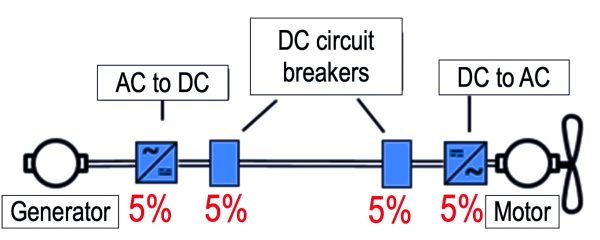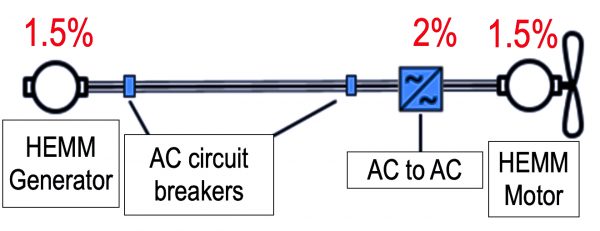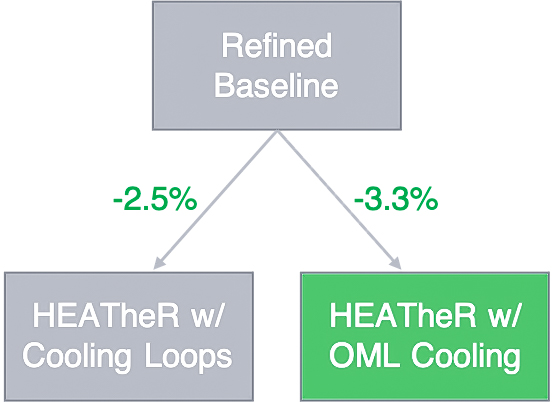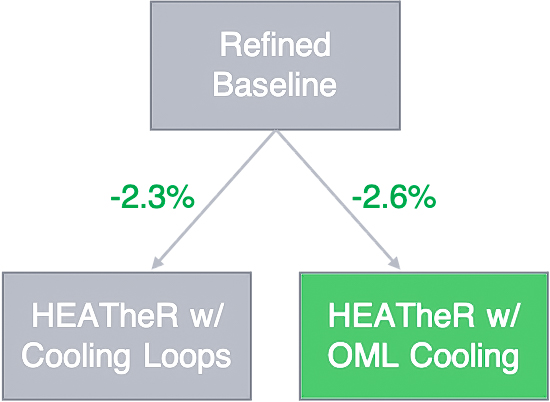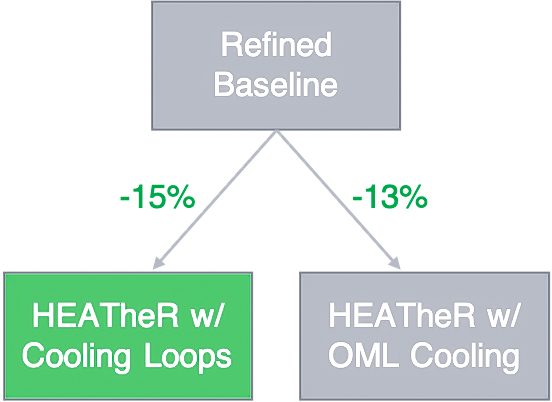High-Efficiency Electrified Aircraft Thermal Research (HEATheR)
HEATheR Aircraft Models and Analysis
Challenge: Every time energy passes through an object that isn’t 100% efficient, some energy dissipates into the air as heat. Current aircraft systems produce large amounts of waste heat and require heavy thermal management systems.
Goal: Minimize heat loss for 3 NASA aircraft concepts by making a more efficient power and thermal management system.
Power Systems
Current state of the art model for a fuel-burning engine:
- System loses 20% of its energy to heat
- Energy is wasted and more fuel or battery power must be carried
HEATheR model:
- A quarter of the heat is lost and half the conversion steps are required, compared to a conventional power system
- Weighs less because contains fewer components
- The High-Efficiency Megawatt Motor (HEMM) serves as the motor and generator
Thermal Management Systems
Fluid cooling:
Fluid cooling requires many components to pump coolant through the inverter and motor, which adds mass, power, and drag.
Outer Mold Line (OML) Cooling:
Rejects heat through the skin of the aircraft when air flows over the wings. Added mass is the only drawback.
Because power systems have mass and add heat, when the power system is changed to the HEATheR model, the propulsion and thermal management systems must be adapted.
Two variations of HEATheR cooling systems proved to be more efficient than a refined baseline model, which accounted for initial adjustments to the existing baseline aircraft.
The refined baseline used a state-of-the-art electric power system with a fluid cooling loop, while the HEATheR models used the advanced power system — one with a fluid cooling loop and one with OML cooling.
1st → 2nd model: smaller fluid cooling loop, so less weight and less to cool
2nd → 3rd model: different thermal management system
Vehicle Model Testing and Results
Single-aisle Turboelectric Aircraft with Aft Boundary-Layer Propulsion (STARC-ABL)
- 150-passenger turboelectric vehicle
- 2 underwing turbofans produce electricity
- Can reach up to 3.3% fuel reduction with the HEATheR w/ OML method
Parallel Electric-Gas Architecture with Synergistic Utilization Scheme (PEGASUS)
- 48-passenger hybrid-electric regional aircraft
- Adjusts the amount of energy being sent to the turbine and motor as flight conditions change
- Can reach up to 2.6% fuel reduction with the HEATheR w/ OML method
Tilt-Wing
- 15-passenger turboelectric air taxi
- Revolutionary Vertical Lift Technology (RVLT) — vertical takeoff and landing
- Can reach up to 15% fuel reduction with the HEATheR w/ cooling loops method
Analysis
A 3% fuel reduction is a significant energy benefit, considering the flight time and number of passengers on STARC-ABL and PEGASUS. With each flight, this results in up to billions of dollars and gallons of fuel saved.
Heat rejection through an aircraft’s skin is more efficient with greater air flow. In a conventional aircraft, the wings provide some lift, so the system requires less power. But Tilt-Wing’s vertical lift property means its wings experience little airflow and its propellors do all the lift work. Thus, Tilt-Wing requires more energy overall and proved more efficient with cooling loops than with OML cooling.
Through electrifying aircraft and reducing fuel burn, carbon emissions will be significantly reduced.

